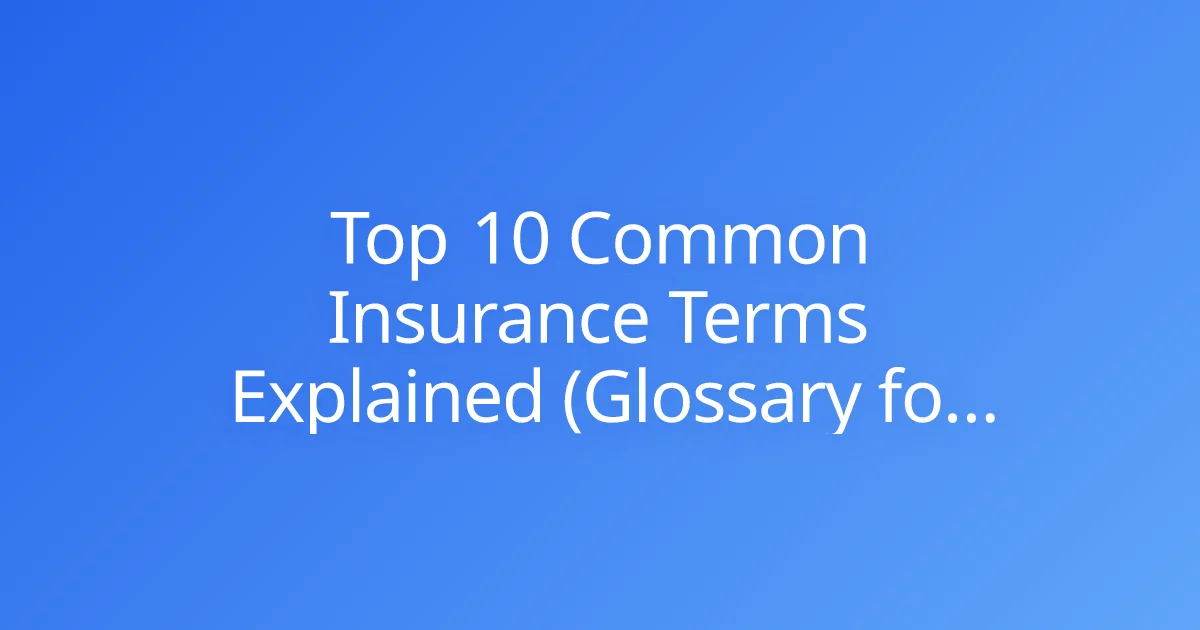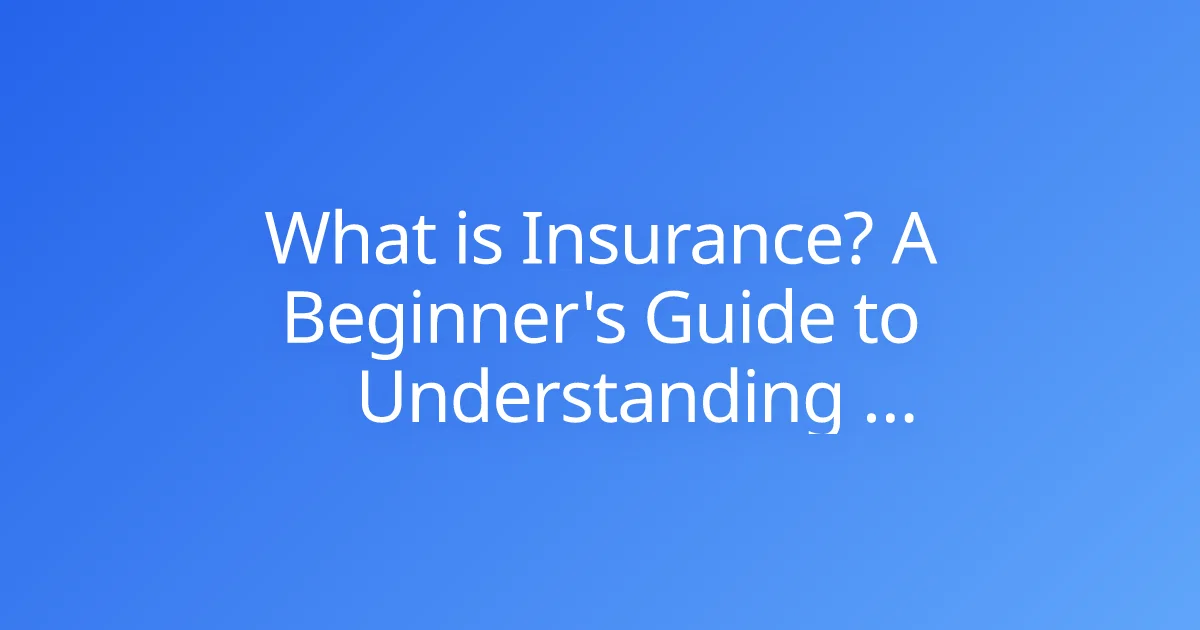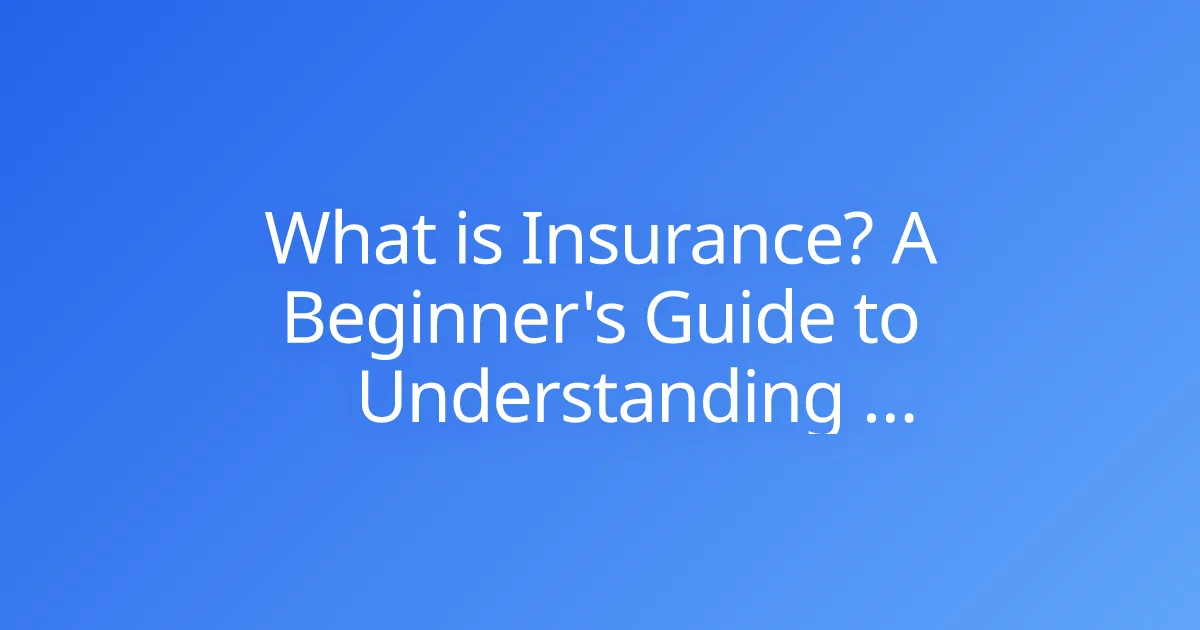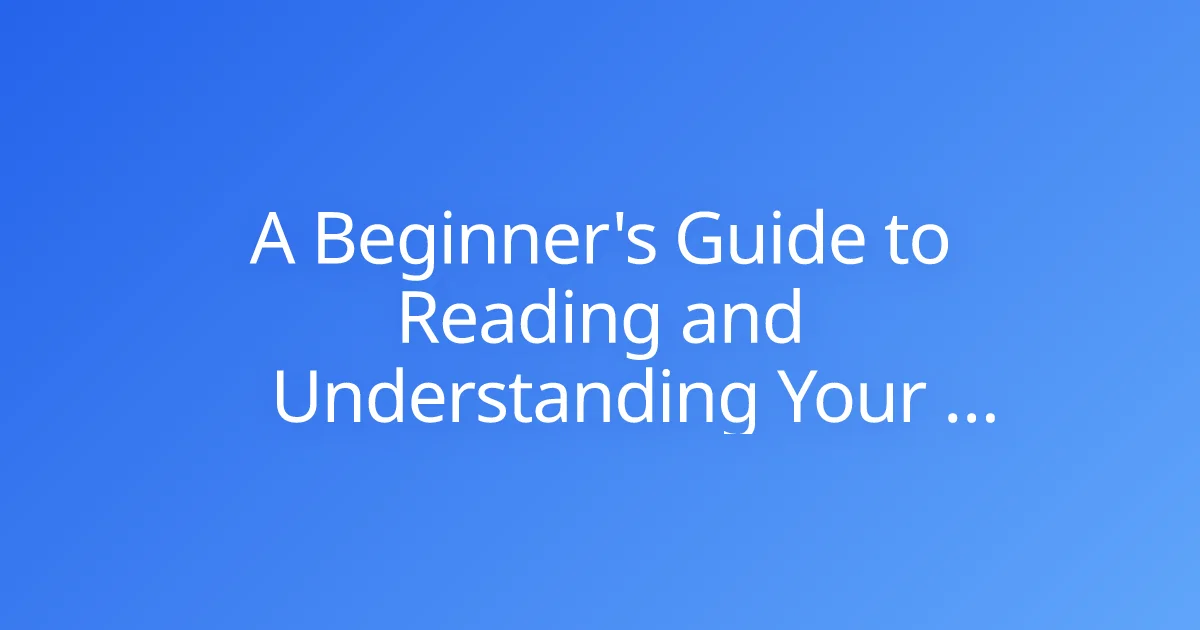Top 10 Common Insurance Terms Explained (Glossary for Beginners)
Have you ever stared at your insurance policy, feeling like you needed a translator? The world of insurance is often filled with specialized vocabulary and confusing insurance jargon that can make even the most crucial details seem impenetrable. From "premiums" to "deductibles" and "exclusions," these common insurance terms are fundamental to understanding your coverage, yet they often leave policyholders scratching their heads.
At The Policy Explainer, we believe that understanding your insurance should never be a mystery. This comprehensive glossary for beginners is designed to cut through the complexity. We've handpicked the top 10 common insurance terms you'll encounter most frequently and broken them down into clear, concise, and easy-to-understand explanations. Our goal is to empower you to read your policy with confidence, make informed decisions, and truly grasp the financial protection you've secured.
Why Understanding Insurance Jargon Matters
It might seem tedious to delve into the specifics of insurance language, but clarity here translates directly into financial security and peace of mind. Misinterpreting insurance terms can lead to significant consequences.
Avoiding Costly Surprises
If you don't fully grasp what "coverage limits" or "exclusions" mean, you could find yourself facing unexpected out-of-pocket expenses when you file a claim. Understanding these terms before an incident occurs allows you to identify potential gaps in your protection and adjust your policy accordingly.
Making Informed Decisions
Whether you're purchasing a new policy, renewing an existing one, or comparing quotes, knowing the precise meaning of common insurance terms enables you to make smart choices. You can compare apples to apples, select appropriate deductibles, and ensure your policy aligns with your actual needs and budget.
Advocating for Yourself
In the event of a claim, knowing your policy's terms empowers you to communicate effectively with your insurer and advocate for the benefits you are entitled to. You'll be able to reference specific sections and confidently discuss your coverage.
Your Essential Glossary: Top 10 Common Insurance Terms
Let's demystify these essential insurance terms, providing clear definitions and practical examples to solidify your understanding.
1. Premium
- Definition: The regular payment you make to your insurance company to keep your policy active. This is the cost of your insurance coverage.
- Why it matters: It's your recurring expense for financial protection. Your premium is influenced by your risk profile, coverage choices, and discounts.
- Example: You pay $150 each month for your car insurance. That $150 is your monthly premium.
2. Deductible
- Definition: The amount of money you must pay out-of-pocket for a covered loss before your insurance company starts paying.
- Why it matters: It directly impacts your immediate financial responsibility during a claim. A higher deductible usually means a lower premium, and vice-versa.
- Example: If you have a $1,000 deductible on your home insurance and a covered storm causes $5,000 in damage, you pay the first $1,000, and your insurer pays the remaining $4,000.
3. Coverage / Policy Limit
- Definition: Coverage refers to the specific types of protection your policy provides (e.g., liability, collision, medical). The policy limit is the maximum amount your insurance company will pay for a covered loss or specific type of coverage.
- Why it matters: It defines the scope and extent of your financial protection. Insufficient limits can leave you underinsured in a major event.
- Example: Your auto insurance policy might have a coverage for "bodily injury liability" with a policy limit of $100,000 per person and $300,000 per accident. This means the insurer will pay up to $100,000 for injuries to one person, and up to $300,000 total for all injuries in one accident.
4. Claim
- Definition: A formal request made by a policyholder to their insurance company for payment or reimbursement for a loss covered by the policy.
- Why it matters: This is the process by which you receive the financial benefit of your insurance. Understanding the claims process is essential for getting paid.
- Example: After a fender bender, you contact your auto insurance company to request they pay for the damages to your car. This is filing a claim.
5. Policyholder / Insured
- Definition: The policyholder is the person or entity who owns the insurance policy and is responsible for paying the premiums. The insured is the person or entity covered by the policy. Often, these are the same, but not always (e.g., a parent might be the policyholder, and their child the insured).
- Why it matters: Identifies who has rights and responsibilities under the policy and who is protected by the coverage.
- Example: As the individual who bought the policy, you are the policyholder. If your spouse is also covered under your health plan, they are also an insured.
6. Insurer / Carrier
- Definition: The insurer (or carrier) is the insurance company that provides the coverage and assumes the financial risk in exchange for the premium payments.
- Why it matters: This is the entity that promises to pay your claims.
- Example: If you have auto insurance with "SafeDrive Insurance," then SafeDrive Insurance is your insurer or carrier.
7. Exclusion
- Definition: Specific events, perils, or circumstances that are explicitly not covered by your insurance policy.
- Why it matters: This is crucial for knowing what your policy won't pay for, helping you identify potential gaps in coverage (e.g., you might need separate flood insurance if it's an exclusion on your homeowners policy).
- Example: Most standard homeowners insurance policies have an exclusion for flood damage. This means if your home is damaged by a flood, your standard policy will not cover the repairs.
8. Rider / Endorsement
- Definition: An endorsement (also known as a rider or addendum) is an amendment or addition to an existing insurance policy that changes its terms or scope. It can add specific coverage or modify existing coverage.
- Why it matters: Allows for customization of your policy to fit unique needs or risks.
- Example: You have a valuable collection of rare stamps. Your standard homeowners policy might not fully cover them. You could add a "scheduled personal property rider" to specifically insure that collection for a higher value.
9. Liability
- Definition: Legal responsibility for causing injury or damage to another person or their property.
- Why it matters: Liability coverage protects you financially if you are found legally responsible for harm to others. Without it, you could be responsible for significant legal costs and damages out of your own pocket.
- Example: If you cause a car accident and injure another driver, your auto liability coverage would help pay for their medical bills and vehicle repairs, protecting you from a personal lawsuit.
10. Coinsurance
- Definition: In health insurance, coinsurance is your share of the cost for a covered health service, calculated as a percentage (e.g., 20%) after you've met your deductible.
- Why it matters: Along with your deductible, it determines your out-of-pocket costs for medical care once your deductible has been met.
- Example: Your health plan has a $2,000 deductible and 20% coinsurance. After you've paid the first $2,000 (your deductible), if you have a $1,000 medical bill, your insurer pays $800 (80%), and you pay $200 (20%) as your coinsurance.
Beyond the Basics: Tips for Navigating Your Policy
Now that you have a grasp of these common insurance terms, here are some actionable tips to help you navigate your actual policy documents with confidence:
- Read Your Declarations Page First: It’s your policy snapshot. Verify all information and understand your specific coverage limits and deductibles at a glance.
- Don't Skim the Definitions: Seriously, this section is your Rosetta Stone for the rest of the policy.
- Pay Close Attention to Exclusions: Knowing what's not covered is just as important as knowing what is. This helps you identify potential risks.
- Ask Your Agent or Insurer Questions: If anything is unclear, don't hesitate to reach out. They are there to explain your coverage in plain language.
- Review Your Policy Annually: Your life changes, and your insurance needs evolve. An annual review ensures your coverage remains appropriate.
Conclusion
Deciphering common insurance terms doesn't have to be an overwhelming task. By familiarizing yourself with this essential glossary, you've taken a significant step toward truly understanding your insurance policy. This knowledge empowers you to confidently navigate your coverage, make informed financial decisions, and ensure you have the protection you need when life's unexpected events occur.
Knowing these terms means you're no longer in the dark. You can actively participate in managing your financial security, rather than passively accepting what's handed to you. Do you have more questions about specific insurance terms, or perhaps a tricky one you've encountered in your own policy?



